Ever wondered, “can you mow the lawn with a pacemaker?” You’re not alone. Many with this life-saving device grapple with this question, uncertain of the risks involved.
Maintaining your garden should be a joy, not a cause for worry.
Understanding the potential risks and taking precautions when undertaking physical activities like lawn mowing, especially with a pacemaker is essential.
This article aims to alleviate your concerns, providing in-depth insight into the safe ways of balancing heart health with outdoor maintenance.
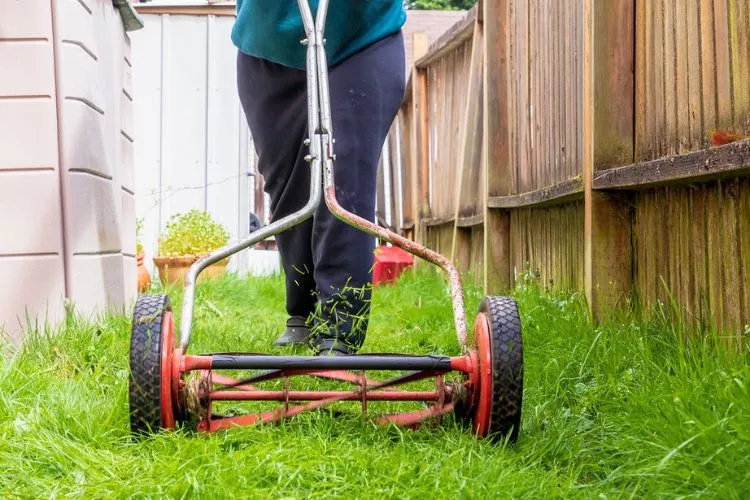
We’ll explore expert guidelines, safety tips, and address the questions you may be too hesitant to ask. Let’s empower you to mow your lawn confidently, without compromising your health.
Table of Contents
What Are Pacemakers?
A pacemaker is a small, battery-operated device placed under the skin near your heart to help it maintain a regular rhythm. This marvel of medical engineering has one purpose – to ensure your heart beats as it should.
The heart has its electrical system which controls the rhythm of our heartbeat. Sometimes, this system can falter, resulting in irregular heartbeat arrhythmias. These could be too fast (tachycardia), slow (bradycardia), or irregular.
That’s where a pacemaker steps in.
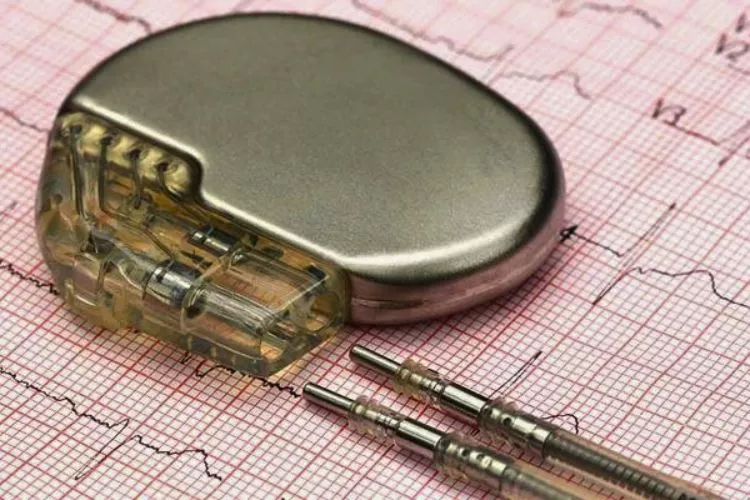
Inside the pacemaker, a computerized generator, battery, and wires (called leads) create, monitor, and deliver electrical impulses to stimulate the heart to beat regularly. The pacemaker continuously adjusts the rate at which these impulses are sent based on your activity levels, ensuring your heart rate matches your activity level.
Common reasons for having a pacemaker implantation vary. A slow heartbeat (bradycardia) is the most frequent, which can cause fatigue, fainting spells, or shortness of breath.
Other conditions, such as heart block, atrial fibrillation, heart failure, or even complications from heart surgery, can also necessitate a pacemaker. Regardless of the cause, a pacemaker aims to help individuals lead an active, worry-free life.
Can You Mow The Lawn With a Pacemaker? Potential Risks
No, you shouldn’t mow the lawn with a pacemaker, because there are many potential risks which must be considered. One of the primary concerns lies in the physical exertion required to push a lawnmower, especially for larger lawns.
This exertion could lead to an increased heart rate, which could strain your heart and disrupt the pacemaker’s functioning.
On top of the physical effort, mowing the lawn can expose you to heat and humidity, especially during summer. This exposure might lead to dehydration or heat exhaustion, which can further strain your heart.
One less commonly known risk comes from the lawnmower itself. Lawnmowers, especially the electric ones, produce electromagnetic fields (EMF), which can potentially interfere with the pacemaker’s signals.
While most modern pacemakers are designed to withstand common sources of electromagnetic interference, maintaining a safe distance from the machine’s motor is always a good idea to minimize risk.
These potential risks underline the importance of consulting with your healthcare professional before undertaking activities such as lawn mowing. Your doctor or cardiac specialist knows your medical history and your pacemaker’s specific model.
This knowledge allows them to provide personalized advice tailored to your circumstances. It’s important not to let fear limit your activities, but ensuring your safety while performing them is equally vital.
Understanding the guidelines provided by your pacemaker’s manufacturer is crucial too. These guidelines offer specific information about potential sources of interference and how to avoid them.
They might also provide advice about physical activities and any precautions you need to take during them. Ensure you’re familiar with these guidelines and, when in doubt, refer to them or consult your healthcare professional.
In conclusion, while mowing the lawn with a pacemaker can pose some risks, these can be managed effectively through proper precautions, professional advice, and understanding your device’s guidelines.
Remember, the goal of a pacemaker is to help you maintain a regular, active lifestyle, not to hinder you from enjoying simple pleasures like caring for your lawn.
Safety precautions for mowing the lawn with a pacemaker
As we venture into the world of lawn mowing with a pacemaker, it’s essential to have safety as our top priority. By taking careful precautions, we can navigate this activity in a satisfying and health-conscious way.
Let’s delve into these precautions, covering a variety of factors such as the type of mower, environmental conditions, proximity to power lines, physical exertion, and protective clothing.
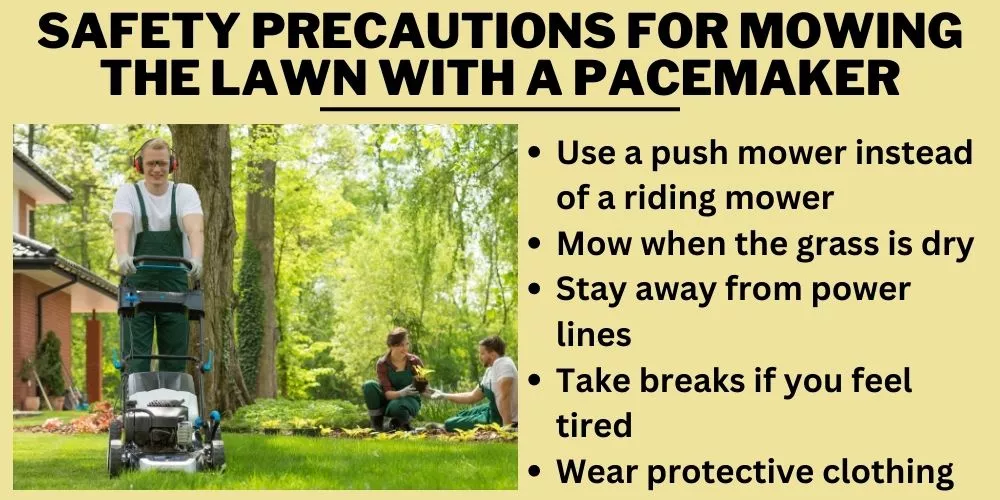
By the end of this section, you’ll better understand how to approach lawn mowing with confidence, armed with the knowledge to prioritize your safety.
Use a push mower instead of a riding mower
Using a push mower instead of a riding mower can benefit those with a pacemaker. While it might seem counterintuitive due to the increased physical exertion, this choice is less about the effort and more about the machine’s electromagnetic fields (EMFs).
Riding mowers generally have larger engines or stronger electric motors that generate stronger EMFs, which could potentially interfere with a pacemaker.
You significantly reduce this risk by opting for a push mower, especially a non-electric one. However, always balance this against your physical capabilities and doctor’s advice.
Mow when the grass is dry
Mowing when the grass is dry might seem like gardening advice, but it’s also crucial from a pacemaker perspective. Wet grass can cause slipping and falling accidents, which might result in injury and affect the pacemaker, especially if you land on your chest.
Furthermore, wet grass often needs more effort to mow, increasing your exertion level. Lastly, moisture can increase the conductivity of electricity, heightening any potential EMF risk from an electric mower.
Stay away from power lines
While power lines are commonplace and generally safe, but they can produce electromagnetic fields that interfere with your pacemaker’s operation.
This interference is particularly likely when operating electrical equipment like an electric mower or when power lines are low-hanging or not in perfect condition. While the chances are slim, keeping a safe distance from them when mowing is a precaution worth taking.
Take breaks if you feel tired
Listening to your body is essential when undertaking any physical activity with a pacemaker, including mowing the lawn. Take a break if you start to feel sleepy, dizzy, or short of breath. Overexertion can strain your heart, which your pacemaker must compensate for.
Break your lawn into sections and tackle it over time, or consider enlisting help if it’s a particularly large or challenging area.
Wear protective clothing, such as a helmet and gloves
Wearing protective clothing can reduce the risk of injury that could indirectly affect your pacemaker. Helmets can help prevent head injuries if you slip or fall.
Gloves can protect your hands from blisters when pushing the mower and reduce the vibrations transmitted to your body, which some people find uncomfortable or disruptive.

Sturdy shoes can help prevent slipping, and long-sleeved shirts and long pants can protect against flying debris. Don’t forget sunscreen to protect against sunburn, especially if you’re on medications that might make your skin more sensitive to the sun.
Pacemaker Interference with Lawn Mower Operation
To understand the potential for pacemaker interference during lawn mowing, we need to dive into the mechanics of lawn mower operation, especially those with an electric motor.
Lawnmowers, specifically electric ones, convert electrical energy into mechanical energy to spin the cutting blades. As with many electrical devices, this conversion process produces electromagnetic fields (EMFs).
Now, why is this important? Well, pacemakers operate through electrical impulses to regulate the heartbeat. In some cases, external sources of electromagnetic fields, like those produced by electric lawnmowers, can potentially interfere with this operation, causing the pacemaker to misinterpret these signals and potentially disrupt its rhythm regulation.
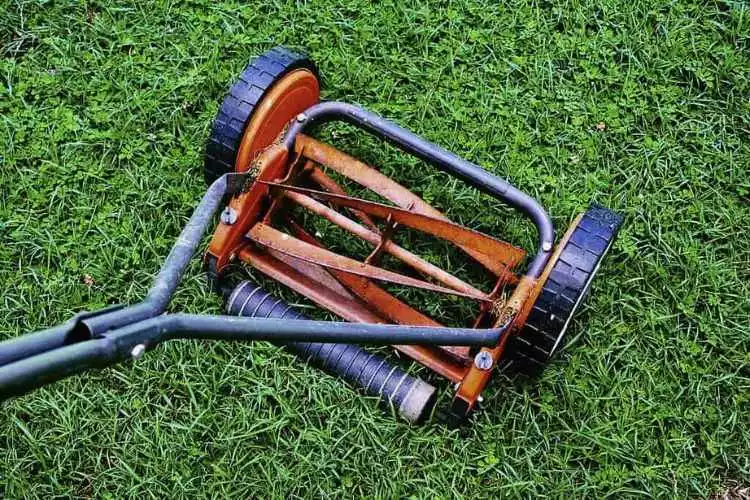
However, it’s important to note that modern pacemakers are designed to resist common sources of electromagnetic interference.
The devices undergo rigorous testing against EMFs during their development, ensuring they can withstand interference from most household appliances and tools, including your average electric lawnmower.
That said, maintaining a safe distance from the source of EMFs (in this case, the mower’s motor) can help further reduce the risk.
While the lawnmower might pose some risk, another consideration is its proximity to power lines and other significant electrical sources while mowing. Power lines, especially low-hanging or in poor condition, can also emit electromagnetic fields.
It’s advisable to keep a safe distance from them and consider mowing these areas at another time if the power lines are too close for comfort.
In conclusion, while there’s potential for pacemaker interference during lawnmower operation, the risk is generally low, especially with modern pacemakers and the implementation of safe practices. Nevertheless, always consult your healthcare provider or the pacemaker manufacturer.
Guidelines for Mowing the Lawn with a Pacemaker
Embarking on lawn mowing with a pacemaker can feel daunting, but with the right guidance, you can approach it with confidence and a sense of security. This section aims to provide comprehensive guidelines to ensure a safe and stress-free mowing experience.
We’ll discuss crucial aspects like consulting your healthcare professional, adhering to the pacemaker manufacturer’s instructions, and cultivating a safe environment for mowing.
Let’s delve deeper into these aspects to equip you with the knowledge necessary for a successful, heart-healthy lawn mowing journey.
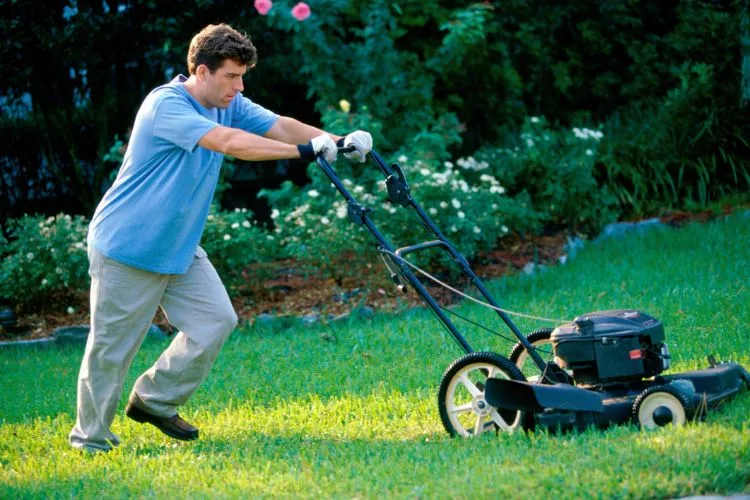
Consultation with Healthcare Professional
Before you even rev up that mower, having a conversation with your healthcare professional is crucial. Remember, each person’s health situation is unique, and what applies to one may not necessarily apply to another, even with similar conditions.
Mowing the lawn is a physical activity, and any physical exertion can impact different individuals with pacemakers.
Your healthcare provider, aware of your specific health status and your pacemaker’s exact model and settings, can give you tailored advice. They can assess your overall ability to undertake the task of mowing based on factors like your heart condition, general health, and the type of pacemaker you have.
Some modern pacemakers come with features that can adapt to changes in physical activity levels, but this can vary widely from one device to another.
Moreover, the healthcare provider can also provide valuable information on warning signs to watch out for while mowing. Knowing when to stop and rest or when to seek immediate medical attention can be lifesaving.
Pacemaker Manufacturer Guidelines
Next to your healthcare professional, the pacemaker manufacturer is an indispensable resource for safety guidelines. Every pacemaker is unique, crafted with specific features and operation principles.
Understanding your particular device is vital; the manufacturer’s guidelines offer this detailed insight.
These guidelines often include information on the device’s resistance to electromagnetic interference, recommendations for physical activity, and precautions for using certain appliances or machinery, including lawnmowers.
Paying attention to these specifics can prevent mishaps and ensure your pacemaker functions optimally.
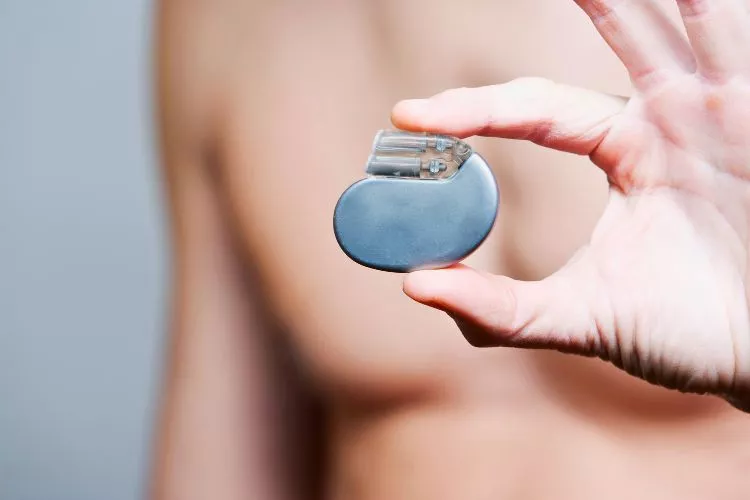
Additionally, manufacturers often provide tips on identifying and responding to potential malfunctions. Even though these are rare occurrences, knowing how to recognize them and what steps to take if they do occur is invaluable information.
Essentially, the manufacturer’s guidelines serve as a roadmap to navigating your daily life with a pacemaker, including tasks like lawn mowing. They provide specific, tailored information that can help keep your heart beating to its rhythm, even as you rev up that lawnmower.
Always keep these guidelines handy, refer to them often, and don’t hesitate to contact the manufacturer with any questions or concerns.
Maintaining a Safe Environment
A well-maintained environment is crucial in ensuring a safe lawn mowing experience. Here, we’re not just talking about your body or your pacemaker but also the physical surroundings in which you’ll be operating the lawnmower.
Firstly, ensure that your walking paths are clear. Remove any stones, sticks, or other obstacles that could be a tripping hazard or caught in the lawnmower blades. A surprise stumble or abrupt stop can increase your heart rate, which may not be ideal when you have a pacemaker.
Proper footwear is another important element. Choose sturdy shoes that offer good grip to prevent any slips or falls on the grass, especially if wet. Flip-flops or sandals should be avoided. Not only can they slip off easily, but they also offer minimal protection against any debris that the lawnmower might throw up.
Lastly, consider the terrain of your lawn. Uneven terrain can make mowing more physically demanding, which could lead to unnecessary strain. If your lawn is hilly or bumpy, you might want to seek help or use a lawn care service.
By cultivating a safe environment, you’re protecting your general wellbeing and ensuring your pacemaker can do its job without additional stressors. Mowing the lawn should be a routine task, not a risky endeavor, and a safe environment plays a pivotal role in maintaining that balance.
Pro Tips For Mowing The Lawn With A Pacemaker
Having a pacemaker shouldn’t rob you of the satisfaction of a well-maintained lawn. You can still engage in this task without compromising your health by following best practices and heeding professional tips.
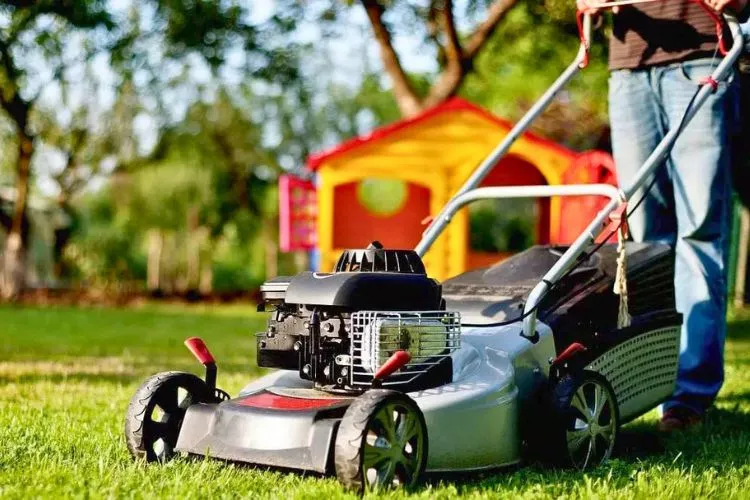
In this section, we’ll explore these actionable insights, tailored to make mowing a lawn with a pacemaker possible, safe, and efficient. From starting slow and avoiding overexertion, to the importance of protective gear, we’re about to delve into the nitty-gritty of mowing your lawn, pacemaker and all. Let’s turn that task into a triumph!
Start Slowly and Gradually Increase Activity
Whether you’re a newbie to lawn mowing or a seasoned pro, having a pacemaker changes the game a little. Here’s a tip that stands the test of time: start slow.
Initially, your body needs time to adjust to the physical exertion of mowing, particularly with a pacemaker regulating your heartbeats. Consider mowing a smaller portion of your lawn initially. Over time, as your body grows accustomed to the activity, you can gradually increase the area you mow. Remember, your health is not a race, but a marathon.
The key here is to pay attention to your body’s signals. Are you feeling out of breath or experiencing palpitations? Does your body feel unusually tired or strained?
These are signs you might be pushing yourself too hard. When this happens, pause and take a break. It’s not about finishing the lawn mowing in record time, it’s about accomplishing it safely.
By starting slowly and gradually increasing your mowing activity, you’re pacing to your unique rhythm, keeping in sync with your pacemaker and ensuring a heart-friendly mowing experience.
Be Mindful of Physical Exertion and Overexertion
Being active is good, but striking the right balance between activity and rest is essential. Mowing the lawn can be quite a workout, especially on a hot day. With a pacemaker, managing your energy levels and being aware of potential overexertion becomes even more critical.
Listen to your body. If you’re feeling unusually winded, it might be a good time to take a break and hydrate. Fatigue or lightheadedness? Don’t shrug it off. These could be signals from your body indicating that you’re pushing your limits. There’s no shame in taking it slow; remember, the tortoise ultimately won the race!
To help manage your workload:
- Consider distributing your mowing tasks.
- Break your lawn into sections and tackle them across different days or times. If your lawn is sizeable, it might be worth seeking assistance.
- Enlist a family member or neighbor, or consider hiring a professional lawn care service.
Sharing the load isn’t a defeat, but a smart strategy in managing your physical exertion. By being mindful of physical exertion, you’ll create a mowing routine that respects your pacemaker and overall well being. Your lawn and your heart will thank you!
Wear Protective Gear
In mowing, we can’t overstate the importance of proper protective gear. Remember, the first rule of any job is safety first.
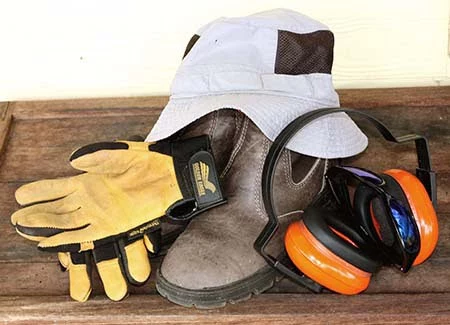
Protective gear isn’t just about reducing potential harm from the mower itself; it’s also about keeping you comfortable and reducing unnecessary strain on your body. Wear safety glasses can protect your eyes from grass clippings and debris. Similarly, using ear protection can help reduce exposure to the loud noise of a running mower.
However, protection doesn’t stop at your eyes and ears. Outside mowing your lawn, you’re exposed to the elements, especially the sun. Sunscreen is a must. Apply a broad-spectrum sunscreen with at least SPF 30 on all exposed skin, and reapply every 2 hours.
Additionally, consider wearing long-sleeved shirts, long pants, and a wide-brimmed hat for additional sun protection. And don’t forget your hands. Good gloves can provide a better grip on the mower and prevent blisters.
By wearing the right protective gear, you’re not only ensuring a safer mowing experience but also minimizing potential stressors that might affect your pacemaker. Gear up, mow safe, and enjoy your time in the great outdoors.
Frequently Asked Questions (fAQs)
Can the vibrations from a lawnmower affect a pacemaker?
Vibrations from a lawnmower are unlikely to interfere with a pacemaker. However, excessive physical exertion could impact your heart rate. Always consult your healthcare provider for advice tailored to your situation.
Are there specific lawnmower types that pose less risk to pacemakers?
Push mowers can reduce physical strain and risk of interference compared to ride-on mowers. Electric mowers may also be preferable with their lower vibration and noise levels. However, individual experiences may vary.
How can I ensure my pacemaker remains safe while mowing?
Maintaining a safe distance from electrical sources, wearing appropriate protective gear, taking breaks, and not overexerting yourself are key. Always adhere to your healthcare professional’s advice and your pacemaker manufacturer’s guidelines.
Are there any warning signs to watch during and after mowing with a pacemaker?
Symptoms like dizziness, shortness of breath, chest pain, or rapid heartbeat can be warning signs. If you experience discomfort or unusual symptoms, stop mowing immediately and seek medical attention.
Conclusion:
In summary, living with a pacemaker doesn’t mean you must abandon your green thumb, but there are crucial precautions to take while lawn mowing. Discuss your activities with your healthcare provider and understand your pacemaker’s guidelines.
Prioritize safety with appropriate gear, mindful pacing, and a keen sense of your body’s signals.
Remember, it’s not just about maintaining your lawn, but more importantly, your health. We hope that this guide has been helpful. You can read about similar topics here on our website. Check back again soon for more.

